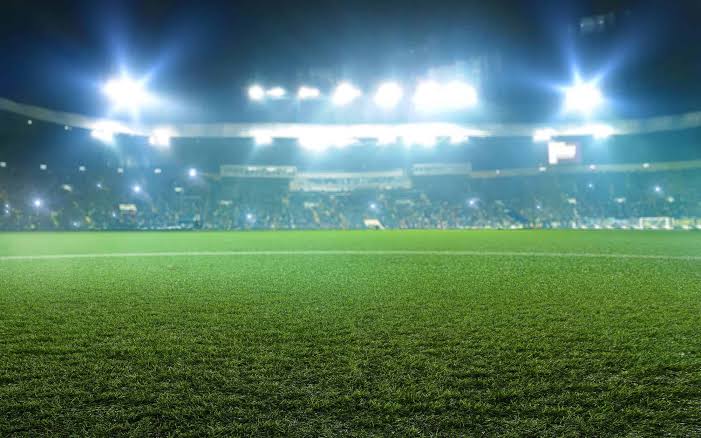A Full Guide for Football Field Lighting

Football, a global sport that engrosses millions of people, is not limited to the daytime. It enhances the experience of both spectators and players by generating an energizing ambiance. Football field lighting ensures visible action even when the sky is dark. The primary considerations for football field light are discussed in this guide. This facilitates the establishment of an ideal atmosphere for both players and spectators.
A Guide for Football Field Lighting
1. Adherence to Regulations and Standards
Before discussing football field lighting, it is vital to understand regulations and standards. Various regulating bodies issue divergent prescriptions on the recommended levels of illumination. Measures for reflection reduction and uniformity have also been implemented. Compliance maintains both the participants’ well-being and the competition’s integrity.
2. Understanding the Importance of Proper Lighting
Beyond visibility, the importance of adequate football field illumination cannot be overstated. Fan engagement, safety, and player performance are all subject to its direct influence. Limited illumination may result in compromised visibility for players. It lowers the game’s general quality and increases the risk of injuries. Additionally, well-lit fields enhance spectators’ experiences. It creates an atmosphere of anticipation and enthusiasm.
3. Selecting Appropriate Lighting Fixtures
Selecting the proper illumination fixtures is crucial to get visibility on a football field. LEDs have emerged as the preferred option for illuminating football fields. Their energy efficiency, durability, and controllability account for this. High-quality fixtures with accurate optics ease the even distribution of light. This phenomenon occurs across the playing surface, diminishing shadows and sunlight.
4. Establishing Lighting Specifications
The level of play, the field’s dimensions, and the nature of the event all impact the specifications for football field lights. Better illumination standards might be observed in professional stadiums that accommodate significant tournaments. Compute the illuminance levels and uniformity to fulfill the venue’s needs.
5. Control Systems for Dynamic Lighting
A dynamic illumination control system will add flexibility to football field light poles. It facilitates the change of illumination levels to various needs. Low illumination levels might be adequate, for instance, during pre-game warm-ups. It is capable of conserving energy while maintaining safety. Additionally, sophisticated control systems permit the development of illumination scenarios for various events. They assist in improving the ambiance and spectator experience as a whole.
6. Orientation and Positioning of Fixtures
Different factors are vital to consider. These include the correct orientation and placement of light fixtures on football fields. They aid in the attainment of consistent illumination. Additionally, glare can be reduced by angling fixtures to the proper angles. This protects from intense shadows, allowing athletes to perform at their peak.
7. Maintaining Light Distribution Throughout the Field
For player safety, ensuring light levels are consistent on the surface is vital. The design of advanced football fields considers vertical and horizontal illuminance levels. Their help ensures that all areas of the field are illuminated. This requires harmonizing fixtures’ placement, spacing, and light intensity with care.
8. Minimizing Glare and Light Pollution
Glare can be a major annoyance for participants and observers in football field light poles. Designed fixtures are shielded and anti-glare. This helps reduce direct sunlight and ensures an unobstructed view. Resolving concerns about light pollution, particularly in urban environments, is critical. The implementation of fixtures and light directing aids in reducing environmental impact.
9. Energy Sustainability and Efficiency
Energy efficiency and sustainability are critical factors in the illumination of football fields. Alongside delivering exceptional illumination, LED technology also conserves energy. The lifespan of this illumination source is extended in comparison to conventional sources. The operation of intelligent control systems increases energy savings. It enables precise illumination level regulation. The field’s genuine requirements determine it.
10. Provision for Disabled Audience Participants and Players
Crucial to the design of illumination for football fields is inclusivity. Always ensure that the lighting systems on football fields can accommodate disabled spectators. This entails ensuring that areas such as staircases, stairs, and seating are illuminated. Additionally, lighting controls that permit customization according to specific requirements are crucial. Foster an environment that is accessible and inclusive for all individuals.
11. Consider The Impact On the Community and Surrounding Environment.
Beyond the stadium walls, the influence of football field lighting transcends. Lighting design should take into account the surrounding environment and community. Collaboration with local authorities and communities facilitates addressing concerns about light spillage. It reduces the size of any potential adverse impacts on the ecosystem. By using illumination techniques, the effect on the adjacent residential areas is reduced.
Summary
Football field lighting encompasses more than mere illumination of the playing surface. It involves providing both participants and spectators with an immersive experience. Everything is critical, from ensuring compliance to standards for choosing LED fixtures. Football field lighting is vital for optimal equilibrium between visibility and safety. They can ensure the exquisite game remains illuminated, even during dark hours.





